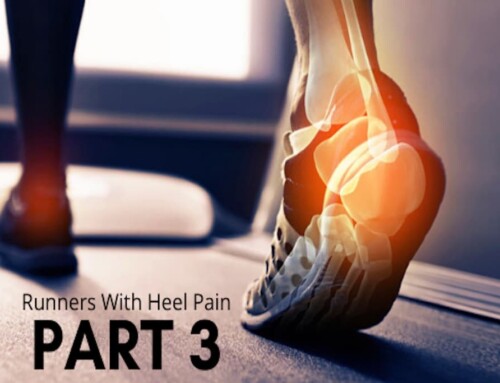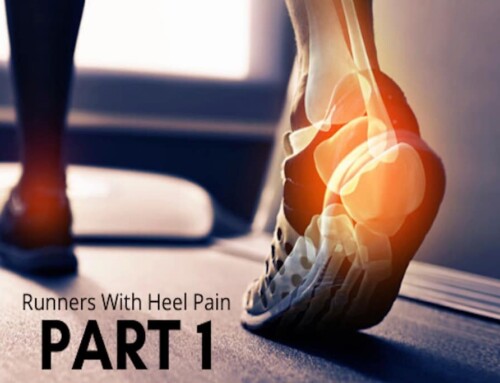Treating Heel Pain Yourself at Home
Are you like me when it comes to asking for recommendations? When I treat a patient of a certain nationality I ask for their opinion of where to go to enjoy an authentic meal from their country. When I listen and end up taking my family out to those restaurants, we often enjoy it and discuss how helpful and wonderful it is to get personal recommendations like that.
Likewise I often get asked by patients how I treat my own foot injuries such as heel pain.
For that reason I will outline how I overcame my own heel pain injury in the hope that writing this will help you navigate your own treatment journey to get you back doing what you love sooner.
In this blog I will outline the conservative treatments that you can easily do at home.
Heel Pain Treatment Pathway 1: Rehabilitation Program for Heel Pain
Much research and evidence has found that most soft tissue injuries will respond well to a focused rehabilitation program. The main reason why this works is because tissues need to learn to adapt to higher loads demanded of them. There are exceptions to this rule, of course, but when we’re talking about heel pain, it’s very important that the plantar fascia (in particular) learns to adapt to higher loads gradually.
For my own heel pain, I followed a daily rehabilitation program that focused on strengthening the plantar fascia and calf muscles. Here is an example of the double leg and single leg plantar fascia exercise that you can do at home.
In addition to this, I also added exercises that strengthened other areas up the kinetic chain such as the hamstrings and core muscles. To be able to run well it’s important to keep your body strong from top to bottom.
Heel Pain Treatment Pathway 2: Remain Active with Low Intensity Exercises or Cross Training Activities
I strongly disagree with dishing out advice to “stop running and rest” whenever runners present with any kind of running related injuries. When it comes to heel pain, you need to be aware of the activities and duration of exercises that you can continue to do which don’t irritate your heel pain. This could be walking, swimming, cycling or even a run that’s shorter than what you’ve been doing in the past.
It’s important to maintain your fitness level while your plantar fascia is in repair mode. This helps your mental state and maintaining manageable loads onto the plantar fascia prevents it from weakening furthermore. However, make sure the loads are realistic and manageable. By all means avoid a flare up of your heel pain! This will set you back and delay a fast recovery.
For me, I worked out that my heel pain was not problematic if I ran for 2-3 kms. With this knowledge, I maintained 2-3 runs a week that were no more than 3 km. The days I didn’t run I would power walk or ride my bike.
All my runs were done on grass. During heel pain treatment, avoid running on firm surfaces such as concrete or footpaths. Hard surfaces will likely be detrimental to the recovery of the plantar fascia. Instead choose even soft grassy areas like a footy oval.
Heel Pain Treatment Pathway 3: Apply Ice and Strap Your Feet
There are five symptoms that show when you experience any acute soft tissue inflammation:
- Redness.
- Heat.
- Swelling.
- Pain.
- Loss of function.
By applying ice to your heel when there’s pain, you can help reduce inflammation in the short term. You can make an ice pack by wrapping a towel around a plastic bag filled with crushed ice or a pack of frozen corn/peas/veggies. Put it on your heel three to four times a day for 15 to 20 minutes at a time.
After short runs or whenever my heel pain felt ‘niggly’ I would apply ice to my heel at the end of the day during my downtime.
Strapping your feet will also be helpful in managing heel pain in the short-term as it provides further support for the plantar fascia when you apply force and pressure on it throughout the day. You can watch and learn how to easily strap your foot at home on this link. If you find that strapping is helpful then it’s likely orthotic therapy will be a good long-term solution, not only to manage your heel pain in the short-term but also help to prevent it from happening again. You can learn about that treatment pathway in Part 3 at this link.
As I don’t wear orthotics when I run, I made sure my affected foot was taped up everytime I went out for a run.
Heel Pain Treatment Pathway 4: Gradual Return to Running Program
As your injury improves you’ll need to have a gradual and steady running program to follow. This is very important! Don’t fall into the trap of doing too much, too soon. There’ll be days when your feet will feel good but it’s vital that you avoid doing more than what your foot can handle. You do not want another flare up!
During the early phase of rehabilitation, I didn’t focus on increasing my running distance. Instead I ran more back-to-back days on a low distance. I would increase the distance when I felt my foot recovered from the previous run with no residual pain. Listen carefully to your body, your legs and feet, and adjust your exercises to what they are telling you.
Heel Pain Treatment Pathway 5: Improve Sleep and Nutrition
Whether you are injured or not, as a runner you need to make sure you get enough sleep and maintain good nutrition. Both of these factors affect how your body repairs damaged cells, enabling you to bounce back stronger and faster.
Much of the restorative process that our body undertakes to recover from the previous day of activities happens when we sleep. When you have an injury, it’s important to focus on getting good sleep. Having a healthy diet will also complement your recovery as all those damaged cells rely on what you put in your mouth to fuel the repair processes it needs.
Making a comeback from heel pain injury is complex and not straightforward. Often your journey will require a mix and match of all the pathways I’ve outlined above.
If you have tried all the above and your injury refuses to improve then I invite you to read Part 3 where I’ll delve into the treatment options that will require a visit to your nearby Podiatrist.
You can find out more about author and podiatrist, Kim-Ngân Harwood at www.thefootcareclinic.com.au






Leave A Comment